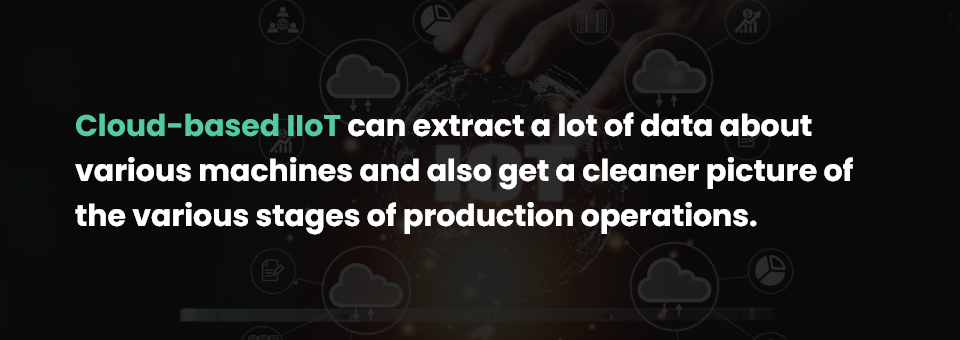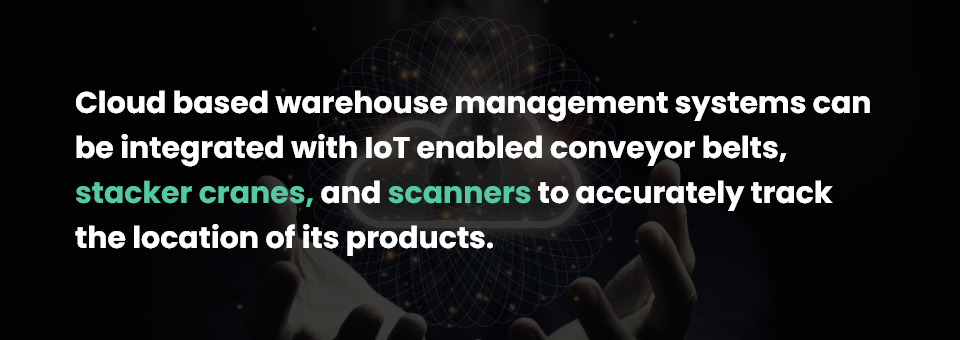The IIoT (Industrial Internet of Things) is a cloud-based network of various industrial machines and devices that brings significant changes to existing processes across various industries. IoT in Industrial automation can increase surveillance, reduce accidents and improve efficiency to transform the operational lifestyle.
Let us look into some IIoT examples and how they are transforming the manufacturing industry.
Remotely Optimize Robot and Other Automated Machine Performance
One of the common IIoT examples is robots and other automation devices connected over a cloud-based network. Cloud helps to monitor all of them through an interface.
At Infineon’s Dresden factory, over 200 robots aid employees. The factory is labeled as the “most automated factory in the world” and has been able to achieve 90% automation.
If there is a halt in production due to a technical glitch, machine logs can be verified to immediately spot the glitch and take necessary action.
Continuous tracking of data can also help in maintaining a timely service schedule and prevent disruption due to delays in refilling, replacement, or repairs of important components.
Back Up And Extract IoT in Industrial Automation Data

Cloud-based IIoT can extract a lot of data about various machines and also get a cleaner picture of the various stages of production operations. This data can be further projected on IIoT dashboards for visualization to gain important insights.
Bosch’s Nexeed software suit collects data from a cluster of 60,000 sensors and delivers relevant information to the correct employee. This ensures predictive maintenance as the team can easily keep track of manufacturing operations in real time.
All automated systems in manufacturing setup are controlled through data interpretation and manipulation. Cloud stores common resources for various systems which can be accessed online as required. Cloud computing allocates these resources for their optimum utilization across various systems avoiding developing a lag in the manufacturing flow.
Upgrade New Functionality On Remote HMI Screens
When a machine is launched it may witness a demand for different additional functionalities across different manufacturing units. Sometimes, these needs can be fulfilled through a simple software upgrade like adding a certain button on the HMI screens.
IIoT devices can receive these updates simply over the cloud without the need for any technician to travel to their place.
Customers of SEM Automazione, an expert in automation in the automotive sector had to earlier wait for a technician visit. They built a router in each of their machines which can be connected to a cloud (IXON cloud) by setting up a VPN. Now, it can quickly resolve issues at remote locations without a physical visit from a technician.
Increased Security And Monitoring
As more and more IIoT devices keep coming up they need different types of communication protocols due to their diverse hardware and firmware. Automated devices dealing with crucial services or potentially hazardous products are prone to cyber attacks.
The cloud acts as a layer of cybersecurity between these multiple types of protocols. Cloud also maintains a backup and helps in easy data recovery if some of it is lost due to some attack.
AWS IoT ships with built-in device authentication and authorization ensuring the safety of IoT data and devices. You can also continuously audit security policies associated with your devices, monitor your device fleet for abnormal behavior, and receive alerts if something doesn’t look right. Prompt corrective measures such as powering off devices or pushing a security fix can be taken.
Improved Supply Chain Logistics

According to a recent study by McKinsey, the average supply chain has a digitization level of 43 percent, the lowest out of five core areas that were examined.
Two important activities of logistics are inventory control and organization of warehouse operations. Cloud based warehouse management systems can be integrated with IoT enabled conveyor belts, stacker cranes, and scanners to accurately track the location of its products. This in turn can greatly improve the supply chain management.
Schwering & Hasse implements IoT services in the supply chain such as warehousing and delivery. Customers were observed to reduce delivery costs up to 40% with predictive demand analytics and onsite stock control,
Scalable Communication
Automation cannot be efficient alone without real time communication. The different machines and stakeholders of a production process must be able to communicate on demand. IoT offers this agility of communication because a single click in the control panel is enough to bring changes across the production chain.
Cloud based IoT supports good digital communication features like,
- Rerouting traffic to optimize the flow of data.
- Bridging various network topologies.
- Providing a vendor-neutral communication protocol so that more and more IoT devices can fluently interact.
- Self-detecting equipment failure or disruption and automatically alerting the floor manager
- Backing up all data for a synchronous resumption after a sudden halt in production throws everything haywire.
AWS IoT Greengrass lets connected devices operate even when they can periodically connect to the cloud. Once the device is free to reconnect, AWS IoT Greengrass synchronizes the data on the device with AWS IoT Core, ensuring seamless data backup.
Smart Factories
Industrial Automation IoT can save resources and automate the running of an entire factory or at least a large part of the process. Industrial sensors can be installed and programmed to shut down a production line on meeting predetermined thresholds.
The connected factory of Bosch at Blaichach employs a performance tracker system that detects cycle-time deviations of mere milliseconds, enabling operators to react quickly and intervene at the earliest stage possible. Furthermore, an operator support system displays errors and provides recommendations on how to fix them.
Stock machines of an assembly line can be activated sequentially through a central monitoring system and can automatically act without the approval of a line manager.
IIoT also involves creating digital twins. As Gartner reported, 13% of organizations implementing the IoT projects already use digital twins, while 62% are either in the process of establishing digital twin use or plan to do so.
These digital replicas can help in project planning right from understanding the floor space it will take, the equipment it will interact with, and the challenges in operation it will meet.
Johnson & Johnson’s has implemented digital twins in its DePuy Synthes medical device manufacturing facility in Ireland. The digital representation of physical assets offered advanced machine insights which helped reduce downtime. The operational cost was cut down as a result.
How IoT in Industrial Automation differs from classical process automation systems

- The IoT is hardware agnostic as control systems, sensors, and network components can be chosen independently.
- IoT with cloud can tap into a number of software applications and tools for limitless performance enhancement.
- IoT offers the flexibility to control multiple production units across geography without actually visiting them.
Wrapping Up
IoT technologies cover a spectrum of applications in the manufacturing industry. Embedded and linked networks contribute to improved lifecycle oversight, demand-specific customization, and better cost control.
However, choosing proper IoT solutions for an industrial setup requires niche experience and may involve a learning curve for the existing workforce.
Alternatively, an IoT expert consulting partner can help to select the proper technical components and take care of integration to the existing pipeline.
